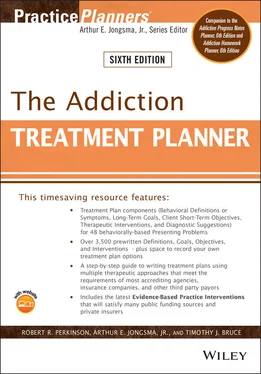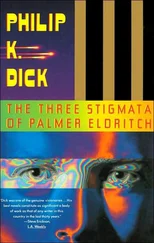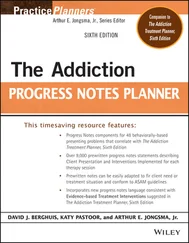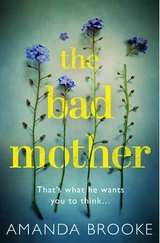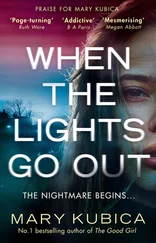The Addiction Treatment Planner
Здесь есть возможность читать онлайн «The Addiction Treatment Planner» — ознакомительный отрывок электронной книги совершенно бесплатно, а после прочтения отрывка купить полную версию. В некоторых случаях можно слушать аудио, скачать через торрент в формате fb2 и присутствует краткое содержание. Жанр: unrecognised, на английском языке. Описание произведения, (предисловие) а так же отзывы посетителей доступны на портале библиотеки ЛибКат.
- Название:The Addiction Treatment Planner
- Автор:
- Жанр:
- Год:неизвестен
- ISBN:нет данных
- Рейтинг книги:4 / 5. Голосов: 1
-
Избранное:Добавить в избранное
- Отзывы:
-
Ваша оценка:
- 80
- 1
- 2
- 3
- 4
- 5
The Addiction Treatment Planner: краткое содержание, описание и аннотация
Предлагаем к чтению аннотацию, описание, краткое содержание или предисловие (зависит от того, что написал сам автор книги «The Addiction Treatment Planner»). Если вы не нашли необходимую информацию о книге — напишите в комментариях, мы постараемся отыскать её.
The Addiction Treatment Planner, Sixth Edition
The Additction Treatment Planner, Sixth Edition
The Addiction Treatment Planner — читать онлайн ознакомительный отрывок
Ниже представлен текст книги, разбитый по страницам. Система сохранения места последней прочитанной страницы, позволяет с удобством читать онлайн бесплатно книгу «The Addiction Treatment Planner», без необходимости каждый раз заново искать на чём Вы остановились. Поставьте закладку, и сможете в любой момент перейти на страницу, на которой закончили чтение.
Интервал:
Закладка:
Congratulations! After completing these six steps, you should have a comprehensive and individualized treatment plan ready for immediate implementation and presentation to the client. A sample treatment plan for Substance Use is provided at the end of this introduction.
A FINAL NOTE ON TAILORING THE TREATMENT PLAN TO THE CLIENT
One important aspect of effective treatment planning is that each plan should be tailored to the individual client's problems and needs. Treatment plans should not be mass-produced, even if clients have similar problems. The individual's strengths and weaknesses, unique stressors, social network, family circumstances, and symptom patterns must be considered in developing a treatment strategy. Drawing upon our own years of clinical experience, we have put together a variety of treatment choices. These statements can be combined in thousands of permutations to develop detailed treatment plans. Relying on their own good judgment, clinicians can easily select the statements that are appropriate for the individuals whom they are treating. In addition, we encourage readers to add their own definitions, goals, objectives, and interventions to the existing samples. As with all of the books in the Treatment Planners series, it is our hope that this book will help promote effective, creative treatment planning—a process that will ultimately benefit the client, clinicians, and mental health community.
REFERENCES
1 American Psychiatric Association. (2013). Diagnostic and statistical manual of mental disorders (5). Author.
2 American Psychiatric Association. (2020) American Psychiatric Association practice guidelines. American Psychiatric Association [Online]. Available from http://psychiatryonline.org/guidelines.aspx.
3 American Psychological Association. (2020) APA clinical practice guidelines. American Psychological Association [Online]. Available from https://www.apa.org/about/offices/directorates/guidelines/clinical-practice.
4 American Psychological Association Division 12: Society of Clinical Psychology. (2016) American Psychological Association division 12 website on research-supported psychological treatments [Online]. Available from https://www.div12.org/treatments/.
5 American Psychological Association Presidential Task Force on Evidence-Based Practice. (2006). Evidence-based practice in psychology. American Psychologist, 61 (4), 271–185.
6 Bohart, A., & Tallman, K. (1999). How clients make therapy work: The process of active self-healing. American Psychological Association.
7 Cochrane Collaboration Reviews [Online]. Accessed on June 5, 2020. Available from http://www.cochrane.org.
8 David, D., Lynn, S. J., & Montgomery, G. H. (Eds.). (2018). Evidence-based psychotherapy: The state of the science and practice. Wiley.
9 Dimidjian, S. (Ed.) (2019). Evidence-based practice in action. Guilford Press.
10 Finley, J., & Lenz, B. (2014). Addiction treatment homework planner. Wiley.
11 Goldfried, M. R. (2019). Obtaining consensus in psychotherapy: What holds us back? American Psychologist, 74 (4), 484–496.
12 Hedegaard, H., Miniño, A. M., & Warner, M. (2020). Drug overdose deaths in the United States, 1999–2018. National Center for Health Statistics.
13 Institute of Medicine. (2001). Crossing the quality chasm: A new health system for the 21st century. National Academies Press Available from http://www.iom.edu/Reports.aspx?sort=alpha&page=15
14 Jongsma, A. E. (2005). Psychotherapy treatment plan writing. In G. P. Koocher, J. C. Norcross, & S. S. Hill (Eds.), Psychologists' desk reference (2, pp. 232–236). Oxford University Press.
15 Jongsma, A. E. & Bruce, T. J. (2014). Adult psychotherapy homework planner (5). Wiley.
16 Jongsma, A. E., & Bruce, T. J. (2010–2012). The evidence-based psychotherapy treatment planning DVD-based series. Wiley. Available from http://www.Wiley.com/go/ebtdvds
17 Jongsma, A., Peterson, M., McInnis, W. P., & Bruce, T. J. (2014). Adolescent psychotherapy homework planner. Wiley.
18 Kelly J. F., Humphreys, K., & Ferri, M. (2020). Alcoholics anonymous and other 12-step programs for alcohol use disorder. Cochrane Database of Systematic Reviews, 3, CD012880.
19 Kelly, J. F., Humphreys, K., & Yeterian, J. (2013). Mutual-help groups. In M. Herie & W.J.W. Skinner (Eds.), Fundamentals of addiction: A practical guide for counsellors (pp. 321–348). Centre on Addiction and Mental Health, 2013: 321–48.
20 Manning, V., Best, D., Faulkner, N., Titherington, E., Morinan, A., Keaney, F., et al. (2012). Does active referral by a doctor or 12-step peer improve 12-step meeting attendance? Results from a pilot randomised control trial. Drug and Alcohol Dependence, 126, 131–137.
21 Nathan, P. E., & Gorman, J. M. (Eds.). (2015). A guide to treatments that work (4). Oxford University Press
22 New Freedom Commission on Mental Health. (2003). Achieving the promise: Transforming mental health care in America (Final report. DHHS Publication No. SMA-03-3832). Rockville, MD: Author. Available from http://govinfo.library.unt.edu/mentalhealthcommission/reports/reports.htm
23 National Institute on Drug Abuse [Online]. Accessed on June 5, 2020. Available from https://www.drugabuse.gov
24 National Institute for Health and Clinical Excellence (NICE) (2020) [Online]. Available from www.nice.org.uk.
25 Norcross, J. C. (Ed.). (2002). Psychotherapy relationships that work: Therapist contributions and responsiveness to patient needs. New York, NY: Oxford University Press.
26 Norcross, J. C. (Ed.). (2019). Psychotherapy relationships that work (3). Oxford University Press.
27 Norcross, J., Campbell, L., Grohol, J., Santrock, J., Selegea, F., & Sommer, R. (2013). Self-help that works: Resources to improve emotional health and strengthen relationships. Oxford University Press.
28 Norcross, J. C., Hogan, T. P., & Koocher, G. P., & Maggio, L. A. (2017). Clinician's guide to evidence-based practices: Behavioral health and the addictions. Oxford University Press
29 Norcross, J. C. & Lambert, M. J. (2018). Psychotherapy relationships that work III. Psychotherapy, 55 (4), 303–315. 10.1037/pst0000193
30 Norcross, J. C. & Wampold, B. E. (eds.) (2018). Psychotherapy relationships that work III. Psychotherapy, 55 (4), 303–315. 10.1037/pst0000193
31 Substance Abuse and Mental Health Services Administration's (SAMHSA) National Mental Health Information Center: Center for Mental Health Services (2004). National consensus statement on mental health recovery. Author Available from http://www.westga.edu/∼vickir/MentalHealth/MH01%20Intro-duction/10%20Fundamental%20Components.pdf
32 Timko, C., Debenedetti, A., & Billow, R. (2006). Intensive referral to 12step self-help groups and 6-month substance use disorder outcomes. Addiction, 101 (5), 678–688.
33 Walitzer, K. S., Dermen, K. H., & Barrick, C. (2009). Facilitating involvement in alcoholics anonymous during out-patient treatment: A randomized clinical trial. Addiction, 104 (3), 391–401.
34 Wampold, B. E. (2001). The great psychotherapy debate: Models, methods, and findings. Erlbaum.
35 Wilson, N., Kariisa, M., & Seth, P., Smith, H., & Davis, N. L. (2020). Drug and opioid-involved overdose deaths—United States, 2017-2018. Morbidity and Mortality Weekly Review, 69, 290–297.
SAMPLE TREATMENT PLAN
1. SUBSTANCE USE DISORDER
| Definitions: | Consistently uses alcohol or other mood-altering drugs until high, intoxicated, or passed out. |
| Unable to stop or cut down use of mood-altering drug once started, despite the verbalized desire to do so and the negative consequences continued use brings. | |
| Denies that chemical dependence is a problem, despite feedback from significant others that the use of the substance is negatively affecting him/her/them and others. | |
| Continues substance use despite knowledge of experiencing persistent physical, legal, financial, vocational, social, and/or relationship problems that are directly caused by the use of the substance. | |
| Exhibits physical withdrawal symptoms (e.g. shaking, seizures, nausea, headaches, sweating, anxiety, insomnia, depression) when going without the substance for any length of time. | |
| Suspends important social, recreational, or occupational activities because they interfere with using the mood-altering drug. | |
| Goals: | Establish and maintain total abstinence, while increasing knowledge of the disease and the process of recovery. |
| Acquire the necessary 12-step skills and/or other skills to maintain long-term sobriety from all mood-altering substances and live a life free of substance abuse. |
| OBJECTIVES | INTERVENTIONS |
|---|---|
| Work cooperatively with the therapist toward agreed-upon therapeutic goals while being as open and honest as comfort and trust allows. (1, 2) | Establish rapport with the client toward building a strong therapeutic alliance; convey caring, support, warmth, and empathy; provide nonjudgmental support and develop a level of trust with the client toward he/she/they feeling safe to discuss his/her/their substance use and its impact on his/her/their life. |
| Strengthen powerful relationship factors within the therapy process and foster the therapy alliance through paying special attention to these empirically supported factors: work collaboratively with the client in the treatment process; reach agreement on the goals and expectations of therapy; demonstrate consistent empathy toward the client's feelings and struggles; verbalize positive regard toward and affirmation of the client; and collect and deliver client feedback as to the client's perception of his/her/their progress in therapy (see Psychotherapy Relationships That Work: Vol. 1 by Norcross & Lambert & Psychotherapy Relationships That Work: Vol. 2 by Norcross & Wampold). | |
| Describe the type, amount, frequency, and history of substance abuse. (1) | Gather a complete drug/alcohol history from the client, including the amount and pattern of his/her/their use, signs and symptoms of use, and negative life consequences (e.g. social, legal, familial, and vocational problems). |
| Participate in a medical evaluation to assess medical health and the medical consequences of substance use. (1) | Refer the client for a thorough physical examination to determine any physical/medical consequences of chemical dependence (include tests for HIV, hepatitis, and sexually transmitted diseases, if warranted). |
| Explore and resolve ambivalence about entering treatment and changing substance use behavior. (1, 2, 3) | Use the nondirective, client-centered, empathic style derived from motivational enhancement therapy (or supplement with “Assessing Readiness and Motivation” in the Addiction Treatment Homework Planner by Lenz, Finley, & Jongsma); explore the client's motivation for change and whether he/she/they are ready to take active steps or would benefit from continued motivational interviewing (see Motivational Interviewing by Miller & Rollnick; Motivational Interviewing and Enhancement by DiClemente, Van Orden, & Wright). |
| Ask the client to make a list of the ways substance abuse has had a negative impact on his/her/their life (e.g. personally, medically, relationally, legally, vocationally, and socially) and the positive impact nonuse may have (or supplement with “Substance Abuse's Negative Impact Versus Sobriety's Positive Impact” in the Adult Psychotherapy Homework Planner by Jongsma & Bruce; or “Consequences of Continuing Addictive Lifestyles” in the Addiction Treatment Homework Planner by Lenz, Finley, & Jongsma). | |
| Using a 12-Step Facilitation Therapy approach (see Twelve-Step Facilitation Therapy Manual by Nowinski et al.), assign the client to complete an Alcoholics Anonymous Step 1 paper admitting to powerlessness over mood-altering chemicals and present it in group therapy or to therapist for feedback (see The Alcoholism & Drug Abuse Client Workbook by Perkinson). | |
| Commit self to an action plan directed toward termination or reduction of substance use. (1, 2, 3) | Encourage and support the client's self-efficacy for change toward the goal of developing an action plan for termination of substance use to which the client is willing to commit. |
| Assign the client to write a list of reasons to be abstinent from addiction (or supplement with “Alternatives to Addictive Behavior” in the Addiction Treatment Homework Planner by Lenz, Finley, & Jongsma). | |
| Develop an abstinence contract with the client regarding the termination of the use of his/her/their drug of choice; process the client's feelings related to the commitment. | |
| Attend Alcoholics Anonymous/Narcotics Anonymous (AA/NA) meetings as frequently as necessary to support sobriety. (1) | Recommend that the client attend AA or NA meetings and report on the impact of the meetings; process messages the client is receiving toward facilitating positive change. |
| Verbalize increased knowledge of alcoholism and the process of recovery. (1) | Conduct or assign the client to attend a chemical dependence didactic series to increase his/her/their knowledge of the patterns and effects of chemical dependence; ask him/her/them to identify several key points conveyed in each didactic and process these points. |
| Cooperate with exploration of increasing satisfaction in areas of life that can support sobriety such as employment, recreation, and relationships. (1, 2, 3) | Facilitate development of a plan for the client to change his/her/their living situation to foster recovery (or supplement with “Assessing My Needs” in the Addiction Treatment Homework Planner by Lenz, Finley, & Jongsma); revisit routinely toward positive change in the client's living situation. |
| Teach the client skills necessary for finding a job, keeping a job, and improving satisfaction in a job setting (or supplement with “A Vocational Action Plan” in the Adult Psychotherapy Homework Planner by Jongsma & Bruce). | |
| Consistent with a community reinforcement approach, assist the client in identifying new alternative sources of reinforcement (e.g. reinforcing personal, social, and/or recreational activities) that do not involve substance use; reinforce gains; problem-solve obstacles toward sustained and effective implementation (See A Community Reinforcement Approach to Addiction Treatment by Meyers & Miller; or supplement with “Alternatives to Addictive Behavior” in the Addiction Treatment Homework Planner by Lenz, Finley, & Jongsma); use problem-solving and communication skills to overcome obstacles. | |
| Participate in behavioral couple's therapy designed to increase the non-substance-using partner's reinforcement of sobriety and to reduce relationship conflict. (1, 2, 3, 4) | Develop a sobriety agreement with the couple that stipulates an agreement to remain abstinent; limits the focus of partner discussions to present-day issues, not past hurtful behaviors; identifies the role of other interventions such as AA meetings, Antabuse use, “trust discussions”; and/or schedules a daily time to share thoughts and feelings. |
| Ask each partner to make a list of pleasurable activities that could be engaged in together to increase positive feelings toward each other (or supplement with “Identify and Schedule Pleasant Activities” in the Adult Psychotherapy Homework Planner by Jongsma & Bruce); process the list and assign implementation of one or more activities before the next session. | |
| Teach the couple problem-solving skills (specifically defining the problem, brainstorm possible solutions, list and evaluate the pros and cons of each solution, select and implement a solution, evaluate all parties' satisfaction with the action, adjust action if necessary); role-play the use of these skills applied to real-life issues of conflict for the couple (or supplement with “Applying Problem-Solving to Interpersonal Conflict” in the Adult Psychotherapy Homework Planner by Jongsma & Bruce). | |
| In light of the recovery contract, review the client's sobriety experience and the couple's interaction since the last session; address any relationship conflicts, assisting the couple in improving their communication skills (e.g. “I messages,” reflective listening, eye contact, respectful responding, etc.) by using role-play in the session. | |
| Earn rewards by submitting drug-negative urine samples. (1) | Implement a prize-based contingency management system for drug-free living by rewarding the client's drug-negative urine samples with desired prizes starting at the low end of a $1–$100 range and increasing with continued abstinence (see Contingency Management for Substance Abuse Treatment by Petry). |
| Learn and implement relapse prevention strategies. (1, 2) | Instruct the client to routinely use strategies learned in therapy (e.g. problem-solving, stimulus control, social skills, and assertiveness) while managing high-risk trigger situations (or supplement with “Aftercare Plan Components” in the Adult Psychotherapy Homework Planner by Jongsma & Bruce). |
| Assist the client in developing a detailed, written recovery plan (e.g. treatment activities, daily routine, basic self-care, relationships, spirituality, work stress, finances, family issues, etc.) that will identify supports and strategies that will be used in maintaining sobriety (or supplement with “Personal Recovery Planning” in the Addiction Treatment Homework Planner by Lenz, Finley, & Jongsma). |
2. DIAGNOSIS
Интервал:
Закладка:
Похожие книги на «The Addiction Treatment Planner»
Представляем Вашему вниманию похожие книги на «The Addiction Treatment Planner» списком для выбора. Мы отобрали схожую по названию и смыслу литературу в надежде предоставить читателям больше вариантов отыскать новые, интересные, ещё непрочитанные произведения.
Обсуждение, отзывы о книге «The Addiction Treatment Planner» и просто собственные мнения читателей. Оставьте ваши комментарии, напишите, что Вы думаете о произведении, его смысле или главных героях. Укажите что конкретно понравилось, а что нет, и почему Вы так считаете.
